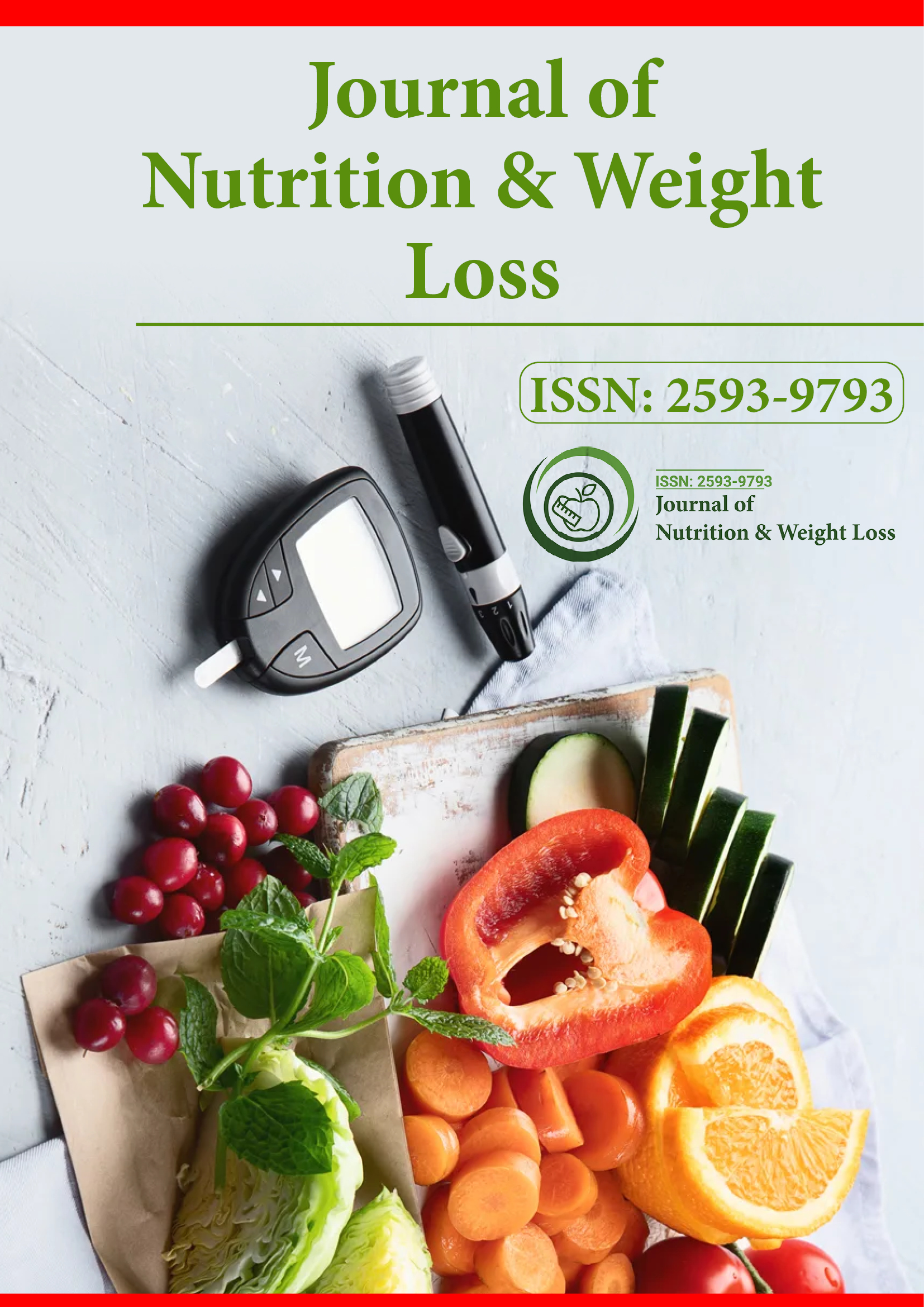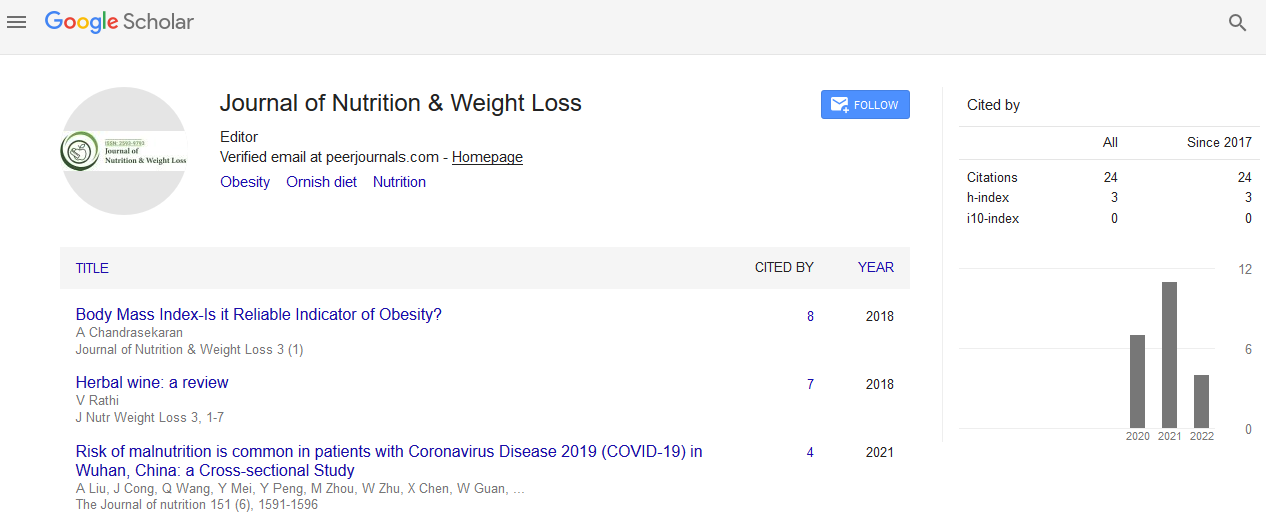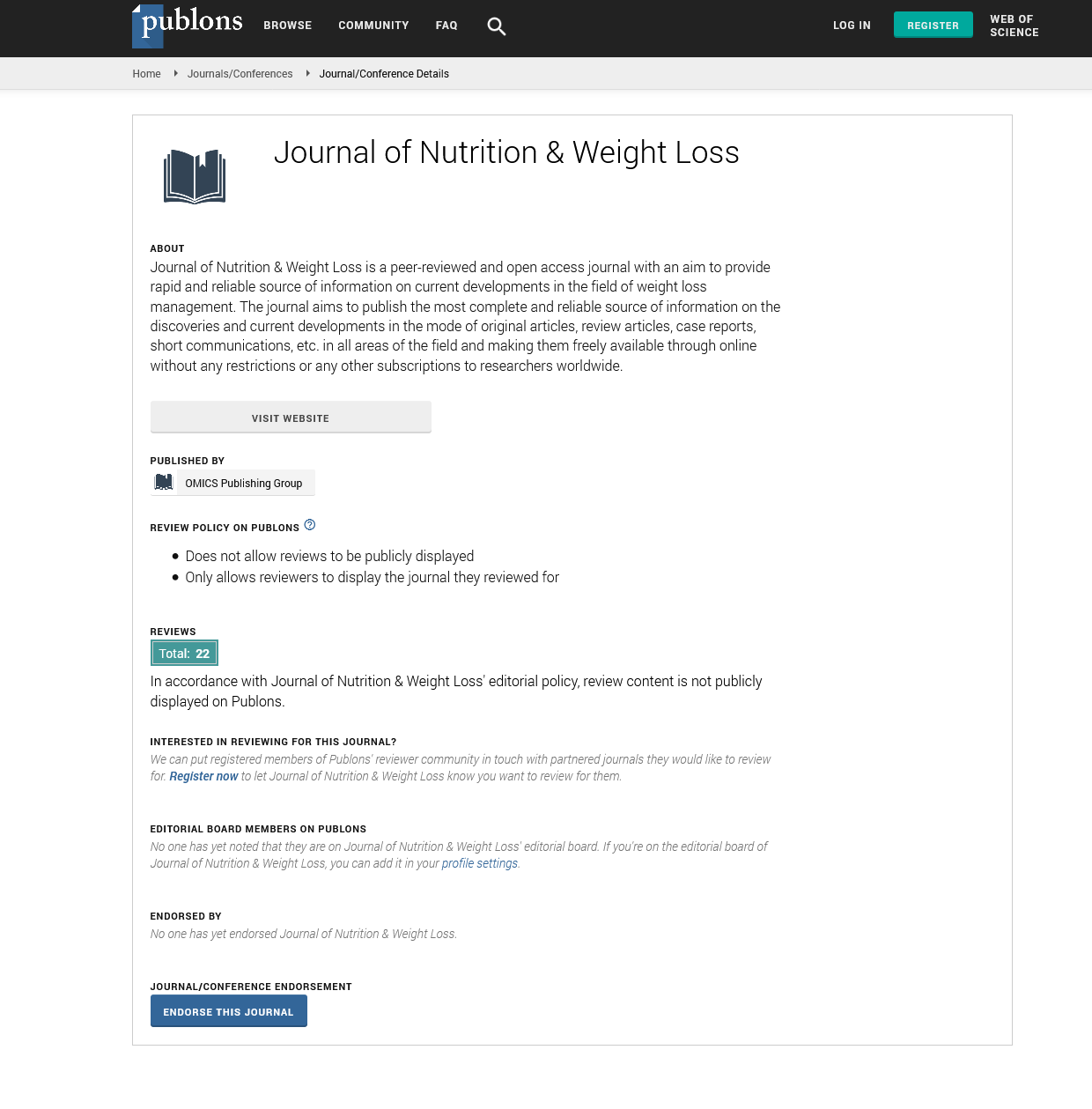Indexed In
- RefSeek
- Hamdard University
- EBSCO A-Z
- Publons
- Euro Pub
- Google Scholar
Useful Links
Share This Page
Journal Flyer

Open Access Journals
- Agri and Aquaculture
- Biochemistry
- Bioinformatics & Systems Biology
- Business & Management
- Chemistry
- Clinical Sciences
- Engineering
- Food & Nutrition
- General Science
- Genetics & Molecular Biology
- Immunology & Microbiology
- Medical Sciences
- Neuroscience & Psychology
- Nursing & Health Care
- Pharmaceutical Sciences
Perspective - (2022) Volume 7, Issue 3
Child Care Intervention Strategies to Improve Nutrition and Health
Amanda Seward*Received: 02-May-2022, Manuscript No. JNWL-22-16970; Editor assigned: 05-May-2022, Pre QC No. JNWL-22-16970 (PQ); Reviewed: 19-May-2022, QC No. JNWL-22-16970; Revised: 26-May-2022, Manuscript No. JNWL-22-16970 (R); Published: 02-Jun-2022, DOI: 10.35248/2593-9793.22.7.138
Description
Nutritional planning entails the development of a nutrition strategy as well as long-term planning to enhance food production and supply, guarantee equitable distribution, and implement programs to raise people's purchasing power. This might include land reforms, competent agricultural counseling to help farmers acquire greater yields from their farms, and assistance with proper farm produce marketing. Some of the plans for the government to implement include increasing people's capacity to buy nutritious food in sufficient quantities, income-generating activities for the poorer sections of the community, making good quality food available at affordable prices through a proper public distribution system, and so much more.
Every child is entitled to adequate nourishment. Diets, services, and practices that safeguard, promote, and support proper nutrition have never been more important than they are now. Since 2000, the proportion of undernourished children under the age of five has decreased by one-third, and the number of undernourished children has decreased by 55 million. This incredible success demonstrates that good nutrition change is achievable and is occurring at a large scale-but there is still more work to be done. By 2020, at least one out of every three children will be malnourished, and at least two out of every three will not be provided the minimal food required to grow, develop, and learn to their full potential.
Nutrition interventions in preschool and child care enhance children's diets, while physical activity programs raise their activity levels, according to substantial evidence. Children's weight outcomes and obesity-related behaviors, such as screen usage, may benefit from such treatments. However, the design, length, and execution of these treatments might all have different outcomes. More research is needed to see if these strategies also lower the likelihood of being overweight or obese.
Following dietary standards in preschool and child care can help youngsters eat less fat and eat more fruits and vegetables. Physical exercise therapies can help people improve their fitness and motor abilities. Nutrition and physical activity programs have been demonstrated to lower children's weight, body fat, and BMI under specific conditions. Interventions with significant parent involvement components are more successful at improving weight outcomes, boosting physical activity, and improving nutrition than those that do not. Multi-component, multi-level, comprehensive treatments are more successful than less comprehensive therapies in changing participants' weight status; yet, such programs might be difficult to implement.
Healthy Kids, Healthy Future (HKHF) is a national initiative that provides materials and tools in English and Spanish to help child care and preschool providers, state and municipal officials, and trainers avoid childhood obesity. HKHF also works with the Early Care and Education Learning Collaborative (ECELC) in Alabama, Arizona, Florida, Indiana, Kansas, Kentucky, California, Missouri, New Jersey, and Virginia to implement policy and program changes in early child care and education settings to improve healthy eating, breastfeeding support, physical activity, and screen time. In 2012, Illinois passed a resolution requiring daily, high-quality physical education in preschools and early child care institutions, among other efforts to reduce childhood obesity.
• The nutritional value of everyday foods
• The importance and nutritional value of a variety of low-cost, locally available, and culturally approved meals
• The importance of nursing exclusively for six months and continuing to breastfeed for two years or longer.
• Irrational ideas and cultural feeding habits create harm.
• Recipes for making nutritious supplemental food and weaning foods from locally accessible low-cost sources.
• To increase the net dietary protein content, include milk, eggs, meat, or pulses in adequate quantities in the diet.
• The importance of feeding children and adults while they are sick
• The value and benefits of having a kitchen garden
• Importance of immunizing their children and practicing good hygiene in their daily lives.
Early Childhood Care and Education (ECE) programs may have a positive impact on children's nutrition by ensuring that they consume a healthy diet and have a positive relationship with food from birth to age five. Dietary habits form early in infancy, persist through adolescence and adulthood, and influence illness risk in the short and long term, including cardiovascular disease and obesity. ECE programs serve a vast number of children in the United States and most other nations, providing care for the majority of the children's waking hours as well as 50%–75% of their daily caloric. Nutrition education, which includes instruction, environmental support, and legislation, may have a big impact on kids' eating habits. When defining the many options within ECE programs to improve child nutrition, the "4- Ps" is a useful mnemonic, referring to provisions, practices, planned education and outreach, and policy. To increase nutrition instruction in their programs, ECE administrators and instructors require guidance and support. Go NAPSACC, an online suite of tools that takes ECE programs through a system of continuous quality improvement, is an effective way for attaining such changes.
Citation: Seward A (2022) Child Care Intervention Strategies to Improve Nutrition and Health. J Nutr Weight Loss. 7:138.
Copyright: © 2022 Seward A. This is an open access article distributed under the terms of the Creative Commons Attribution License, which permits unrestricted use, distribution, and reproduction in any medium, provided the original author and source are credited.


